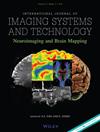Grading of steatosis, fibrosis, lobular inflammation, and ballooning from liver pathology images using pre-trained convolutional neural networks
IF 3
4区 计算机科学
Q2 ENGINEERING, ELECTRICAL & ELECTRONIC
引用次数: 0
Abstract
This study aims to automatically detect the degree of pathological indices as a reference method for detecting the severity and extent of various liver diseases from pathological images of liver tissue with the help of deep learning algorithms. Grading is done using a collection of pre‐trained convolutional neural networks, including DenseNet121, ResNet50, inceptionv3, MobileNet, EfficientNet‐b1, EfficientNet‐b4, Xception, NASNetMobile, and Vgg16. These algorithms are performed by fine‐tuning the trainable layers of the networks. The results showed that compared to other methods, the EfficientNet‐b1 network provides a better response to grade the stage of liver disease among all indicators from pathological images, due to its structural features. This classification accuracy was 97.26% for fibrosis, 94.1% for steatosis, 90.2% for lobular inflammation, and 98.0% for ballooning. Consequently, this fully automated framework can be very useful in clinical methods and be considered as an assistant or an alternative to the diagnosis of experienced pathologists.使用预先训练的卷积神经网络对肝脏病理图像中的脂肪变性、纤维化、小叶炎症和气球状突起进行分级
本研究旨在借助深度学习算法,自动检测病理指标的程度,作为从肝组织病理图像中检测各种肝病严重程度和程度的参考方法。分级是使用预先训练的卷积神经网络的集合来完成的,包括DenseNet121、ResNet50、inceptionv3、MobileNet、EfficientNet-b1、Efficient Net-b4、Xception、NASNetMobile和Vgg16。这些算法是通过微调网络的可训练层来执行的。结果表明,与其他方法相比,EfficientNet-b1网络由于其结构特征,在病理图像的所有指标中对肝病的分期提供了更好的响应。纤维化、脂肪变性、小叶炎症的分类准确率分别为97.26%、94.1%、90.2%和98.0%。因此,这种完全自动化的框架在临床方法中非常有用,可以被视为经验丰富的病理学家诊断的辅助或替代方案。
本文章由计算机程序翻译,如有差异,请以英文原文为准。
求助全文
约1分钟内获得全文
求助全文
来源期刊

International Journal of Imaging Systems and Technology
工程技术-成像科学与照相技术
CiteScore
6.90
自引率
6.10%
发文量
138
审稿时长
3 months
期刊介绍:
The International Journal of Imaging Systems and Technology (IMA) is a forum for the exchange of ideas and results relevant to imaging systems, including imaging physics and informatics. The journal covers all imaging modalities in humans and animals.
IMA accepts technically sound and scientifically rigorous research in the interdisciplinary field of imaging, including relevant algorithmic research and hardware and software development, and their applications relevant to medical research. The journal provides a platform to publish original research in structural and functional imaging.
The journal is also open to imaging studies of the human body and on animals that describe novel diagnostic imaging and analyses methods. Technical, theoretical, and clinical research in both normal and clinical populations is encouraged. Submissions describing methods, software, databases, replication studies as well as negative results are also considered.
The scope of the journal includes, but is not limited to, the following in the context of biomedical research:
Imaging and neuro-imaging modalities: structural MRI, functional MRI, PET, SPECT, CT, ultrasound, EEG, MEG, NIRS etc.;
Neuromodulation and brain stimulation techniques such as TMS and tDCS;
Software and hardware for imaging, especially related to human and animal health;
Image segmentation in normal and clinical populations;
Pattern analysis and classification using machine learning techniques;
Computational modeling and analysis;
Brain connectivity and connectomics;
Systems-level characterization of brain function;
Neural networks and neurorobotics;
Computer vision, based on human/animal physiology;
Brain-computer interface (BCI) technology;
Big data, databasing and data mining.
 求助内容:
求助内容: 应助结果提醒方式:
应助结果提醒方式:


